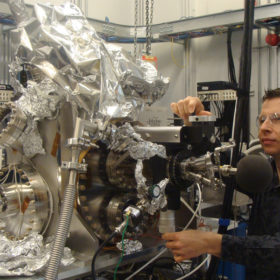
Scientists in the US took a closer look at the mechanisms causing perovskites to degrade under light and raised temperatures. By testing perovskite cells with various additives and other recipe tweaks, the group was able to identify pathways to improving long-term stability.
Even as the efficiencies keep going up, concerns surrounding stability and long-term performance remain for perovskite solar cells.
And as with silicon PV, understanding the processes that cause degradation under certain conditions will be key to mitigating their effects and creating a perovskite cell that can stand up to long-term deployment.
According to scientists at Florida State University (FSU), however, the effects of multiple stress factors being applied simultaneously has not been well explored. “How can we make perovskites more stable under real-world conditions in which they’ll be used. That’s what we’re trying to understand,” says Lea Nienhaus, Assistant Professor at FSU. “Perovskites that don't degrade quickly could be a valuable tool for obtaining more energy from solar cells.”
With this in mind, the group set out to investigate the combined effects of light and elevated temperature on a variety of different perovskite recipes. Their results are published in the paper Understanding the effect of light and temperature on the optical properties and stability of mixed-ion halide perovskites, in Journal of Materials Chemistry C.
They found that unwanted mechanisms cause the loss of the organic part of the perovskite, forming lead iodide/bromide. Adding rubidium to the perovskite was found to exacerbate this effect, while cesium was shown to enhance the overall cell performance and create a more stable film structure. “…cesium is effective in stiffening the perovskite lattice,” the group explains, “which can be attributed to a better size match for the lead iodide/bromide.”
Electric fields
A further paper published by the same group takes a closer look at the electronic properties of perovskites, using microscope imaging to observe the effects of electric fields on the cells' current/voltage characteristics.
These results, published in the Journal of Applied Physics, revealed that under certain conditions ions move through the material, affecting its electrical response. Understanding this, along with the combined effects of different stress factors, will be vital in developing high-performance perovskite devices that can meet long-term performance requirements.
Lắp đặt điện mặt trời Khải Minh Tech
https://ift.tt/2X7bF6x
0906633505
info.khaiminhtech@gmail.com
80/39 Trần Quang Diệu, Phường 14, Quận 3
Lắp đặt điện mặt trời Khải Minh Tech
https://ift.tt/2ZH4TRU
Không có nhận xét nào:
Đăng nhận xét